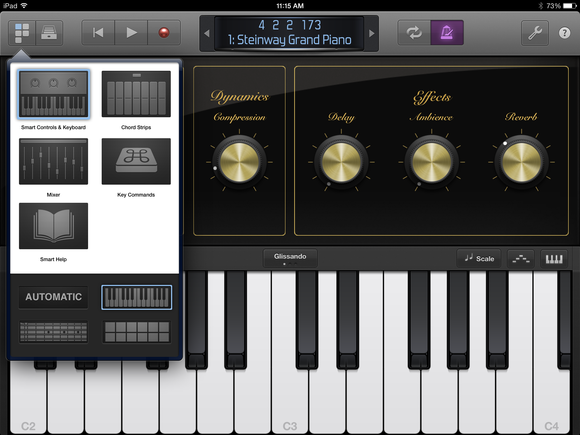Open Midi Files In Garageband Ipad
- Open Midi Files In Garageband Ipad 10
- Ipad Garageband Midi Input
- Open Midi Files In Garageband Ipad Pro
- Open Midi Files In Garageband Ipad 2

- Extensive Garageband iPad Tutorial Garageband is another unique gift from Apple for audiophiles and more pertinently for music creators or prodigies altogether. IPad further exploits the full functionality of GarageBand by extending the intuitiveness with its overtly simple but responsive touch screen gestures.
- Import the MIDI file into GarageBand 11 on the Mac (sorry, Mac only) Save that GarageBand Project; Modify the GarageBand file so it can be imported into GarageBand for iPad. Per default, you cannot open a GarageBand 11 Project File in GarageBand for iPad, even if they have the same file extension (.band).
- Also to note that AudioShare can house midi files and even play them with a chip tune type player as like a preview, but it can't play another app via midi, but does the 'open-in' Correction.typo from my above pos, it should be: 'GarageBand on iOS does NOT deal with midi files in or out.'
- How To: MIDI files are a common method of sharing multi-track music compositions, as they contain no sound, only data, making them small and transportable. Backing tracks are commonly stored in MIDI format, and these can be imported into a MIDI sequencer (such as a keyboard), or a music production tool such as GarageBand, from where they can be easily played back and/or modified according to.
From email attachment to GarageBand. Open your email app. Virtual dj 8. 2 mac full. Locate the email with the audio file attachment you want to import into GarageBand. Save or export the audio file into iCloud Drive (exact instructions vary depending on email app used) Follow the instructions in the From iCloud Drive To. How to import MIDI files in GarageBand iOS (iPad, iPhone) Close. How to import MIDI files in GarageBand iOS.
Sometimes you’re on the go and a inspiration strikes. If you have an iPad or iPhone with GarageBand installed, you can tap out a quick drum beat or bassline. That’s cool, but if you are looking to do more with your music, you may want something with a little more power than GarageBand. Say hello to Logic Pro.
Logic Pro is a professional DAW (digital audio workstation). It allows for users and engineers to record, arrange and mix music. What’s very cool is that much of the code in GarageBand is based on Logic. Many of the instruments and effects in GarageBand are scaled down versions of those in Logic, too. This means that you can actually import GarageBand tiles to Logic.
First, tap the “Edit” button on the top-right.
Tap the “Share” icon in the top-left corner of the “My Songs” view of GarageBand.
The application will ask you how you want to share the song “Share Song Via” and you have several choices. Choose iTunes.
Open Midi Files In Garageband Ipad 10
After that, GarageBand will ask you to choose a format. You can send the song to iTunes as an iTunes file (which is basically just an AAC for iTunes playback) or GarageBand. You want to choose GarageBand.
Sync your device to iTunes. This will import your file.
Ipad Garageband Midi Input
Under device’s Apps Tab (Note: Your device must be connected to iTunes and you must select it), you will see the GarageBand icon. Select it, and your file will appear under the GarageBand Documents list. Click on the file and “Save to…”. Save it to your usual music folder, or wherever you like to keep your song files.
/izotope-machine-learning.html. You may have to download an update when you open the file:
Open Midi Files In Garageband Ipad Pro

Open Midi Files In Garageband Ipad 2
The file will default to your installed DAW (GarageBand for Mac, Logic, Logic Express). Now you can edit and use the file in Logic Pro.



